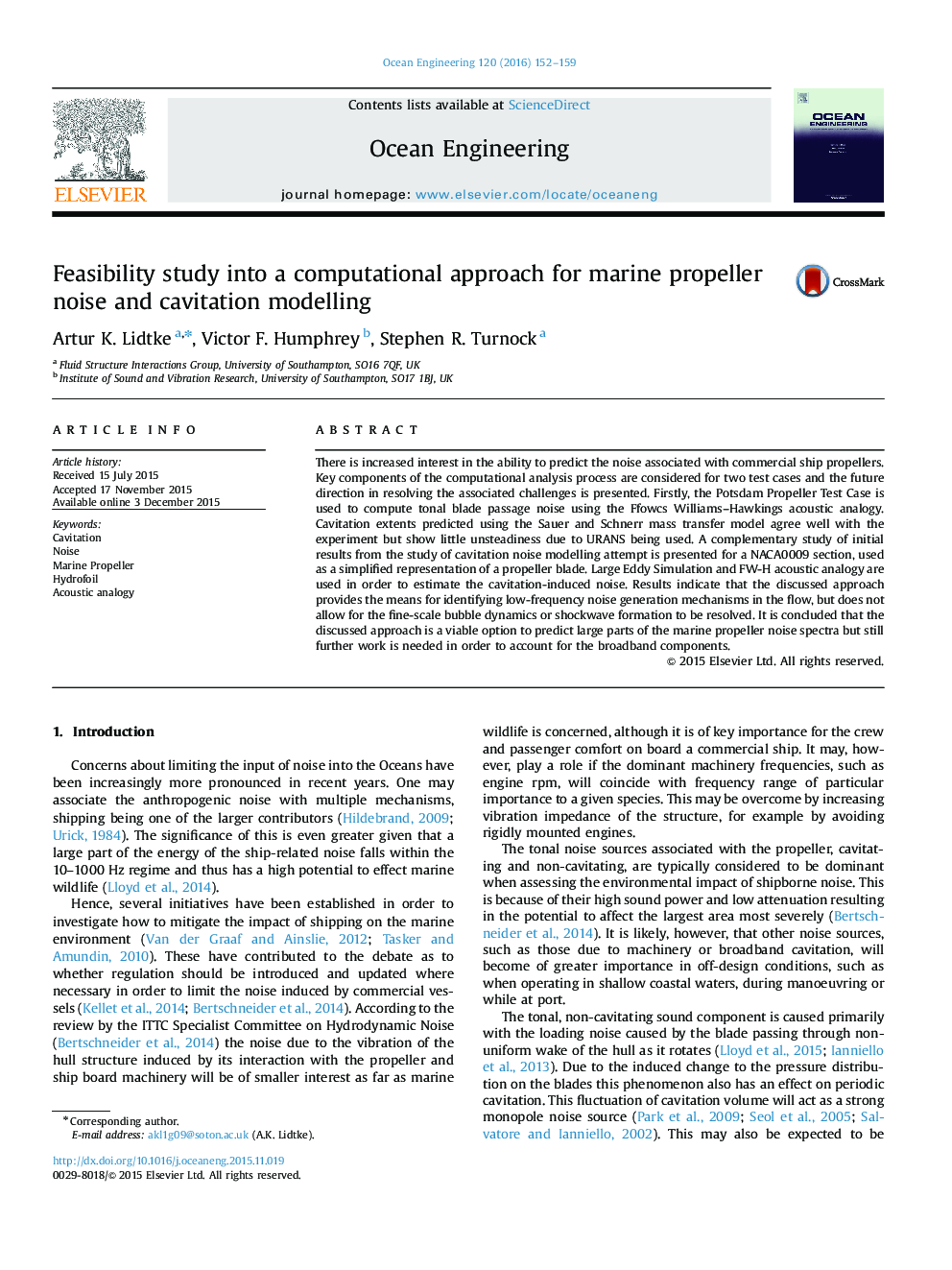| کد مقاله | کد نشریه | سال انتشار | مقاله انگلیسی | نسخه تمام متن |
|---|---|---|---|---|
| 1725038 | 1520670 | 2016 | 8 صفحه PDF | دانلود رایگان |
• Current progress in marine propeller noise modelling is reviewed and the most significant challenges are highlighted.
• Mass transfer cavitation model is shown to agree well with experimental data for the PPTC case in steady conditions.
• Tonal blade noise of the propeller is computed using the Ffowcs Williams–Hawkings acoustic analogy and URANS flow solver.
• Large Eddy Simulation and Ffowcs Williams–Hawkings acoustic analogy are used together to predict the noise radiated by a sheet cavitating hydrofoil.
There is increased interest in the ability to predict the noise associated with commercial ship propellers. Key components of the computational analysis process are considered for two test cases and the future direction in resolving the associated challenges is presented. Firstly, the Potsdam Propeller Test Case is used to compute tonal blade passage noise using the Ffowcs Williams–Hawkings acoustic analogy. Cavitation extents predicted using the Sauer and Schnerr mass transfer model agree well with the experiment but show little unsteadiness due to URANS being used. A complementary study of initial results from the study of cavitation noise modelling attempt is presented for a NACA0009 section, used as a simplified representation of a propeller blade. Large Eddy Simulation and FW-H acoustic analogy are used in order to estimate the cavitation-induced noise. Results indicate that the discussed approach provides the means for identifying low-frequency noise generation mechanisms in the flow, but does not allow for the fine-scale bubble dynamics or shockwave formation to be resolved. It is concluded that the discussed approach is a viable option to predict large parts of the marine propeller noise spectra but still further work is needed in order to account for the broadband components.
Journal: Ocean Engineering - Volume 120, 1 July 2016, Pages 152–159
